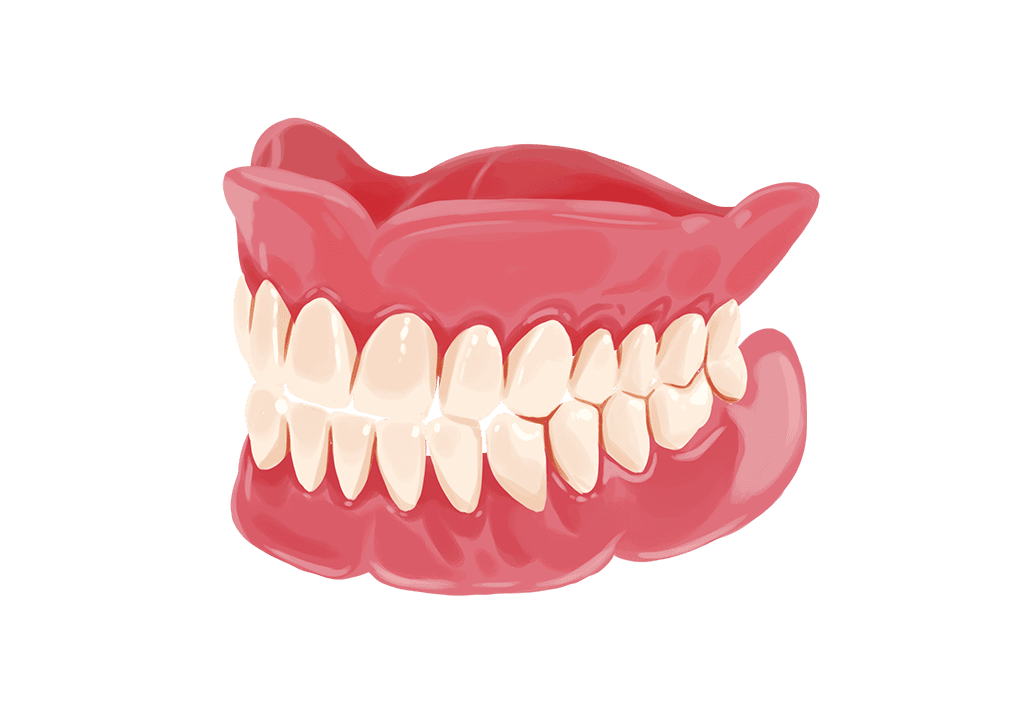Dentures, sometimes called false teeth, are a kind of removable dental restoration that replaces missing teeth. That usually means multiple teeth and sometimes all teeth. There are many ways to replace missing teeth. The best treatment choice is directly dependant on the individual patient and their unique situation.
What are dentures made of?
Creating a removable denture or partial denture requires taking impressions of your mouth. A special dental gel is placed in a delivery tray and pressed over the teeth or gums. It then sets into a flexible and precise mold of your mouth.
From these impressions, stone models are created. These are near perfect recreations of your upper and lower dental arches. Replacement teeth can then be made by a dental laboratory.
Upper full dentures, replacing all the top teeth, cover the entire roof of the mouth. Lower full dentures, replacing all the bottom teeth, are instead usually horseshoe-shaped.


